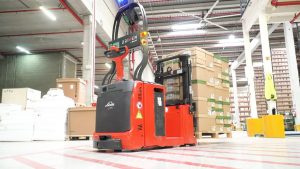In the world of warehouses, picking robots have undergone a remarkable evolution. You’ll explore the groundbreaking innovations that have shaped these robots, from early advancements in artificial intelligence and machine learning to the integration of vision systems and sensor technology. Discover how automation and collaboration are paving the way for the future of picking robots.
Early Innovations in Picking Robotics
You’ll be fascinated by the early innovations in picking robot, such as the introduction of the automated conveyor belt system. This breakthrough revolutionized the way items were transported within warehouses, streamlining the picking process and increasing efficiency. Additionally, 3D printing technology played a significant role in the early development of picking robot. With the ability to create custom parts and components, manufacturers were able to design and build robots that were more versatile and adaptable to different warehouse environments. Furthermore, ergonomic design improvements were implemented to enhance the safety and comfort of the workers operating these robots. These advancements included adjustable heights, padded handles, and intuitive interfaces, all aimed at reducing strain and fatigue. The combination of automated conveyor belts, 3D printing technology, and ergonomic design improvements laid the foundation for the evolution of picking robotics in warehouses.

Advancements in Artificial Intelligence and Machine Learning
To stay ahead in the rapidly evolving world of warehousing, you must embrace advancements in artificial intelligence and machine learning. These technologies have revolutionized various industries, and the warehouse sector is no exception. Advancements in robotics, driven by artificial intelligence and machine learning algorithms, have significantly enhanced the efficiency and productivity of warehouse operations.
Robotic systems, equipped with advanced sensors and algorithms, are now capable of performing complex tasks such as picking and sorting items with precision and speed. These advancements have had a profound impact on the job market within the warehousing industry. While some fear that the rise of robotic systems will lead to job losses, research suggests that the impact is more nuanced. While certain repetitive and manual tasks may be automated, new job opportunities will emerge in areas such as robotics maintenance, programming, and system supervision.
Integration of Vision Systems and Sensor Technology
By integrating vision systems and sensor technology, you can enhance the accuracy and reliability of warehouse operations. Computer vision applications and sensor fusion techniques are revolutionizing the way warehouses optimize their processes. Computer vision systems use cameras and algorithms to interpret visual information, allowing them to recognize objects, identify their position and orientation, and track their movement. By combining this with sensor technology, which can provide additional data such as proximity and temperature, warehouses can create a comprehensive view of their environment. This integration enables real-time monitoring and analysis, leading to improved inventory management, enhanced order fulfillment, and increased operational efficiency. Moreover, by leveraging these technologies, warehouses can automate tasks that were previously performed manually, minimizing errors and reducing labor costs. The potential of integrating vision systems and sensor technology in warehouses is vast, offering a glimpse into the future of smart and automated logistics.
The Future of Picking Robots: Automation and Collaboration
Can picking robots collaborate with human workers in warehouse automation? This is a question that has been at the forefront of discussions surrounding the future of automation and its impact on the job market. The integration of robots into warehouse operations has undoubtedly increased efficiency and productivity. However, concerns about the displacement of human workers and the potential loss of jobs have also emerged. Research shows that while automation has the potential to replace certain tasks traditionally performed by humans, it also creates new opportunities for collaboration. Picking robot can work alongside human workers, complementing their skills and improving overall productivity. By automating repetitive and physically demanding tasks, robots free up human workers to focus on more complex and value-added activities. This collaboration between humans and robots in warehouse automation not only enhances efficiency but also helps to mitigate the negative impact on the job market.
